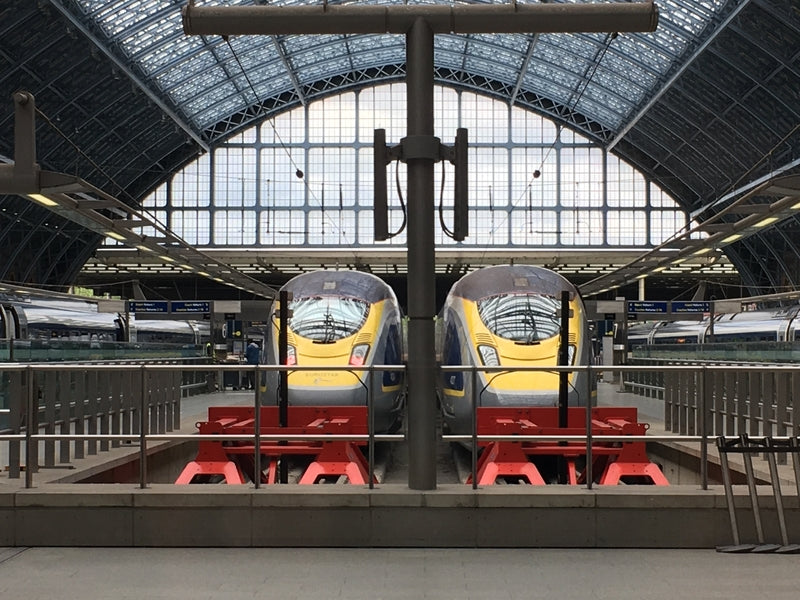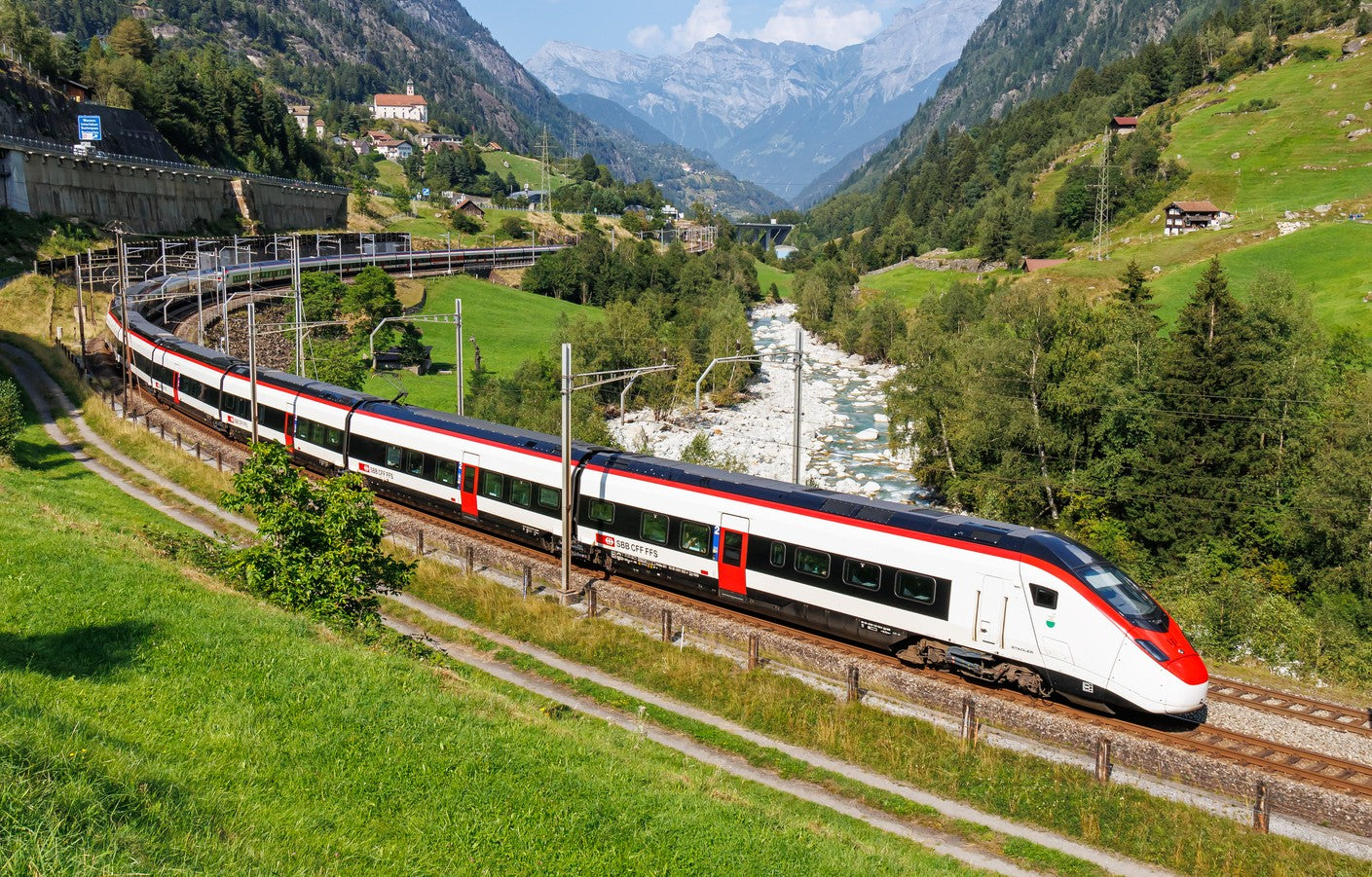ERT reader Peter Pennington recounts a recent trip to Amsterdam. Read part one of his blog post here.
Part Two
So what lessons are there to be learned from my Eurostar experience, both for the future traveller and for those responsible for providing the different services? And what about the longer-term future in this new golden age of international rail travel through the Channel Tunnel?
Firstly, in human terms all the staff in the different companies were trying their best and were really wanting to be helpful. This should always be recognised and appreciated by the customer with a few “thanks” and maybe a sense of humour.
Secondly some companies had obviously thought through how they could help those who needed it. Others may need to just think a little more; but it must be difficult to look at your own organisation from the perspective of a wheelchair. Perhaps, especially for the benefit of designing new railway stock as well as for current service standards, a small informal “Disabled Travellers Consultative Group” of their regular travellers should be put together privately by each company. I believe it would help. From experience I am sure this would be much preferable to just talking to more formal and larger national representatives and organisations as the latter might prove to be less flexible in attitudes and more “politically” or tax-saving orientated. By talking directly with users, a company might learn of upcoming problems such as planned newer wheelchair designs that would necessitate wider train carriage doors or even lift access modifications. Half a dozen service users chatting face to face with say three company representatives once every 3 or 6 months could yield great benefits all ways round.
Thirdly looking to the future, now is the time to consider whether passenger numbers and thus pressure on St Pancras can be reduced. Of course, a reduction in numbers flowing through the existing facilities might increase the overhead costs per passenger. But it might also prevent the threat of repeat passengers getting fed up with long waiting queues and turning to alternative travel. Such would be a potentially big problem for the disabled.
The present situation is rather like it was 60 years ago for UK air travel. I remember well how if flying abroad from Edinburgh, Glasgow, Belfast or even Manchester you first flew to Heathrow, and then after hanging around for a few hours changed planes. The quickest and easiest solution for Eurostar is to re-open both Ebbsfleet and Ashford stations for occasional trains in both directions. Say one of each Paris and Amsterdam routed via the alternative stations. With good publicity this time Ebbsfleet would draw in a lot of potential passengers from the east of England via the Dartford Tunnel. The additional security facilities and the minimal extra stopping-time costs would be offset by savings at St Pancras. Longer term the forthcoming Lower Thames Crossing will bring much potential traffic from eastern England to Ebbsfleet where there is already ample parking. Looking further ahead a fresh look at the possibility of through trains from say Edinburgh (with a pickup in York), Manchester (perhaps via Birmingham) and Cambridge, all of them via Stratford would both help the St Pancras congestion and increase the overall travel numbers. If Eurostar refuse to quickly move into these options, then before long competitors will have every justification for offering to provide future services. It might be that Ashford rather than Ebbsfleet should be the designated pick up/set down point for disabled passengers as the probable extra stopping time would not risk blocking the main Channel Tunnel line with delays.
Travelling back home to the UK I chose to do so by the Hook of Holland to Harwich night boat service of Stena line. The “Ferry Services” section of my European Rail Timetable shows 13 different Stena services in Europe, so my comments below may apply to others as well as to the “Hook” service. I had used this route and its previous shipping companies many times over my past 70 years of European business and family holiday travel. I was interested to see how they treated those who needed help. In the old days there were two ships each way (one Dutch and one British) that coped with the then (pre-Ryanair) much larger numbers that crossed by sea. They had provided a day service and then a repeat couple of “Night Boats”. At one stage the day service was supplemented with a fast hovercraft version as well.
Nowadays it is two large Stena vessels that between them provide a morning sailing in each direction and then a repeat night-boat version. I had chosen the night sailing from the Hook. We had about 700 passengers, these included foot passengers, many private cars (mostly UK holiday makers returning for the start of the new school year), and a multitude of big commercial vehicles with their drivers.
All, apart from the foot-passengers, drive on to the vessel and then use stairs or lift to go up to the main decks. But I knew from experience that for me, as a foot passenger with baggage, there would be a snag on boarding. Once through checking-in and clearing the Dutch emigration (future camera locations etc. for wheelchair personnel?) it is a long, long steep incline up a covered way to reach the deck entrance to the ship itself (Incidentally it can also be difficult and long when arriving in The Netherlands). Even for the fit and able it is a haul when boarding but more especially for the elderly. It needs a rebuild to all be on one level with an initial escalator. They appear to have recognised the problem with a small length of moving path but that is not enough.
At this point I would just warn about arriving at The Hook from England. That walk-way, even going downhill, can be quite trying, especially as it may be followed by a long queue at the Dutch Immigration. I wondered if a request for help before disembarking might produce a wheelchair. Once in the exit area the disabled traveller is faced with a problem that to reach the nearby railway station for the local train service to Schiedam and thence onward is a few minutes open air walk. It is no fun for even the fully mobile, especially when with an introduction to Dutch sleet, snow or a biting North Sea wind. And with a wheelchair and luggage? I wondered if Stena would be willing to help. It was not always thus. It used to be a one minute out of the exit/entrance hall and straight onto a platform for your long train with its Wagon-Lit carriages waiting to take you direct to Copenhagen or Interlaken or even Moscow!
Times have changed for travelling in both directions and being aware of the climb up to the ship at The Hook I had mentioned the problem when originally phone booking and was advised that they would help if I mentioned it on checking-in. Stena were as good as their word and kindly put me on a mobile cart that drove me up the incline to the deck entrance. Once there a crew member welcomed me aboard and took my luggage to the lift to my deck where he handed me over to a colleague who kindly escorted me and my luggage to my overnight cabin. All the staff were very friendly and helpful. I did not see any wheelchair users that night but was told they averaged around 4 per sailing for which disabled cabins are provided. I would not expect any other cabins would be suitable both by way of access and as it unlikely they would have suitable toilets. The day boat service might be preferable.
Being reasonably mobile with my walking stick I was able to go via lifts or staircases down to the main deck area with its reception, shops and refreshment facilities. Once again, when eating, the staff and their supervision were excellent, helping to carry my tray to a table and even offering to go back and fetch extras.
Breakfast next morning, after a tannoy awakening at 05.30, was preceded by a visit to reception to ensure someone would help me with disembarkation. For everyone else that would be at 06.30. I would be after them. This made great sense and to speed things up they provided a wheelchair to the exit point. The only snag was that the shipboard wheelchair was understandably small and was not fitted to also take a suitcase, unlike the cart at The Hook. At the exit from the ship, I was handed over to the Harwich staff to push me another long ship-to-land walkway to Immigration. There seemed to be the need for a re-examination of these hand-over arrangements, especially regarding the luggage with wheelchairs. The slight delays, for me as the last passenger, had meant the Immigration & Customs folk had to wait an extra about 15 or more minutes for me as he last to arrive. I apologised for delaying them and we all had a good joke about it. After all, being welcomed home by five or six representatives of His Majesty’s Government for just one poor ninety-year-old is quite impressive. Perhaps next time it will be a band of The Royal Marines?
And so lastly a message to all those feeling maybe housebound at home and thinking their days for foreign travel are probably over. Companies and their staff are there to help you to keep on travelling. The facilities are often available if you want to look for them. Keep your spirits up. To travel is to have fun in life, SO KEEP TRAVELLING, IT IS FUN. And don’t forget to take your European Rail Timetable with you!
Text copyright Peter Pennington, gratefully used with permission. Photo: Stena Britannica. Courtesy of Stena Line.



